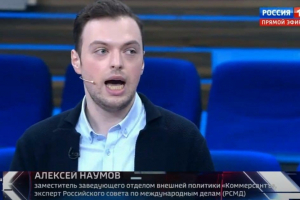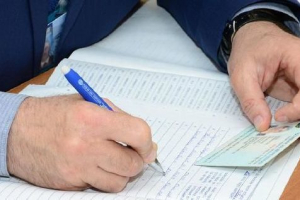


Senior Policy Analyst focused on South Caucasus at the European Policy Center (EPC) based in Brussels, Amanda Paul joined the trip to the Azerbaijan's regions near the conflict zone, organized by the International Eurasia Press Fund (IEPF).
On July 18-19, the IEPF organized a trip to Azerbaijan's regions near the conflict zone. Together with 11 well-known journalists and writes from Uzbekistan, Amanda Paul visited the war-affected regions of Azerbaijan such as Ashagy Abdurahmanly village in Fuzuli region, Jojug Marjanli village in Jabrail region, Hasangaya village in Tartar region and met with the refugees and IDPs who live there.
After this trip, she shared her thoughts and impressions with Eurasia Diary.
"I can say that I really enjoyed the trip because I have never been near to the frontline before. I have only read and written about it. So when you actually come here, it gives you a different perception because you can feel the proximity to the conflict, you can see how the life of the people who are living near by, is affected. So it gives you a different idea of how it is to be in this conflict zone," Amanda Paul said.
Together with the rest participants of the two-day trip, Amanda Paul went to recently restored Jojug Marjanli village in Jabrail region of Azerbaijan. This visit was very sensitive. She had a chance to meet with the IDPs who returned back to newly built houses just some days ago. Throughout 23 years, these people were yearning to return back; however it was impossible due to the fact that strategic Lele Tepe heights had been under Armenian occupation. Only in April 2016, during the escalation of the Nagorno-Karabakh conflict, Azerbaijani armed forces could liberate the Lele Tepe heights from Armenian occupation and make it possible to live in safety in Jojug Marjanli.
"It is nice to see that IDPs, who wished to return to their old lands, were able to do so. It has happened very quickly. The Azerbaijani authorities have constructed new homes for the IDPs and other infrastructure such as school. Being able to return after so many years seems to have a positive psychological impact as the IDPs seem to feel reconnected to their lands despite the fact that they know that life will remain difficult being rather isolated and near to the frontline. I was surprised to see that there is a desire to return even though in some cases these reconstructed houses are in the middle of a village that is basically destroyed or partially destroyed. Indeed, it would indicate that the desire of Azerbaijanis to return to this territory is strong," Amanda Paul noted.
Amanda Paul also visited the IEPF regional Vocational Training Center (VTC) located in Tartar district.
"VTC in this region is a good initiative. It brings people to the edge of the conflict and allows them to see how it affects the lives of those living here and as well as the regions. A solution to the conflict would have a very positive impact on these regions and for all the peoples – both Azerbaijani and Armenian – and I hope this will happen sooner rather than later. There should be more efforts from the international community to support IDPs along with greater efforts to push towards the solution of this conflict, which is already 25 years long, which is already too long. This conflict has negatively affected the lives of millions people. It has also hobbled the development and security of the entire South Caucasus region," Amanda Paul said in conclusion.














